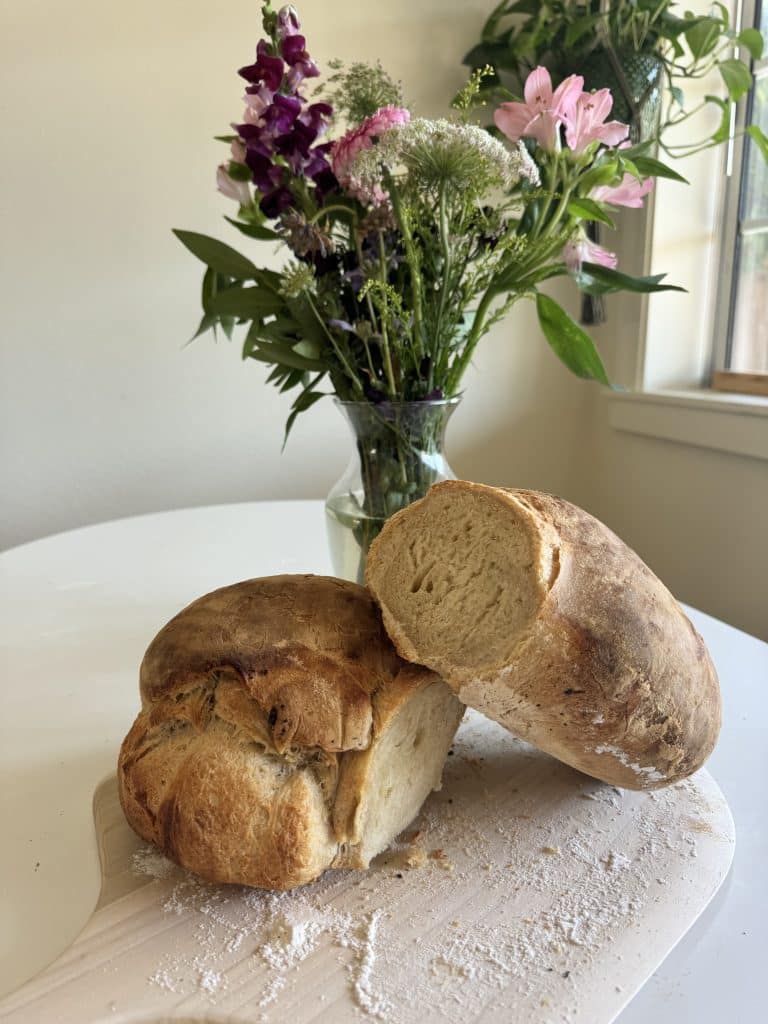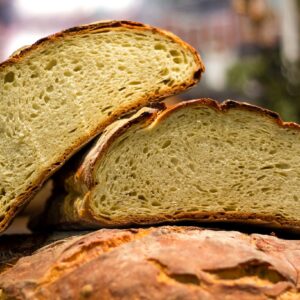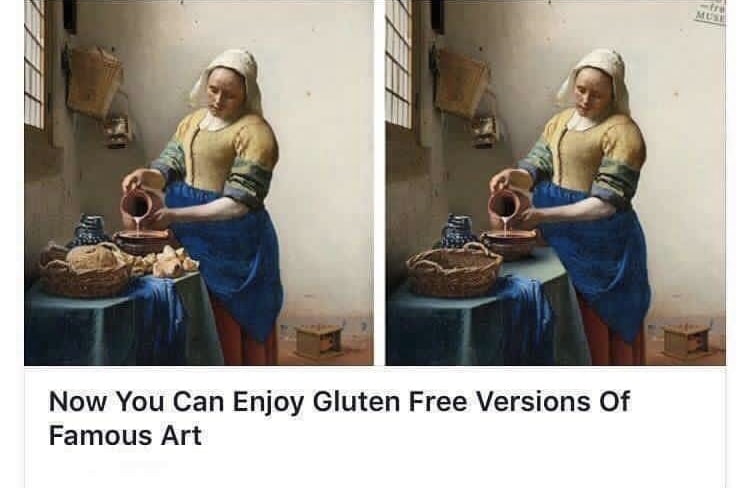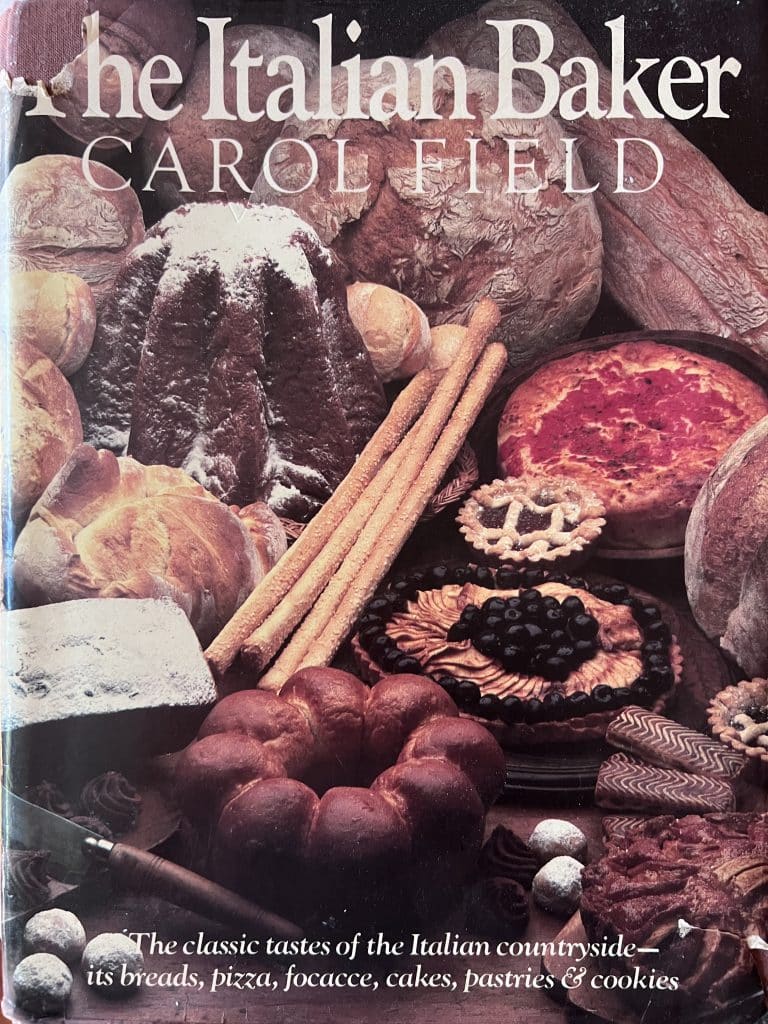Ciao Italianista contains affiliate links and is a member of the Amazon Services LLS Associates Program. If you make a purchase using one of these Amazon links, I may receive compensation at no extra charge to you. See my disclosure policy for more information.
Recipe and Story of Pane Pugliese

What do you think of the bread in Italy? Were you blown away like I was at all the delicious artisan bread that you can find in the Italian bakeries? It seems every third or fourth shop in an Italian town is a bakery. I remember the windows filled with those voluminous loaves of bread. So many different kinds and styles. And the smell of the fresh-baked loaves! Every day when I was a student in Bologna, I used to buy a loaf of bread and some pomodori or tomatoes. I would find a bench to sit on and that was my lunch. I loved pulling apart the bread and seeing all the big holes. I would eat out the doughy part first and then wrap the crunchy crust around the tomatoes to make a panino.
Making Bread Back Home – Faccendo Pane Pugliese Tornata a Casa
One of the things I missed the most about Italy when I finally had to go back home was the bread. In those times and in that place where I lived before and after my first year in Italy, there was no artisan bread. The place was Madison, WI and the year was 1988. The only bread in the grocery stores was sliced soft processed white bread lined in rows on the shelves in thin plastic bags. The only variation was a slightly more whole wheat bread called Roman Meal.
I was determined to learn how to make Italian bread. My favorite kind was pane pugliese, bread from Puglia. I can’t remember now what recipes I was following, but I remember trying by trial and error to make pane pugliese and failing every time. At some point, I finally found this wonderful book called The Italian Baker by Carol Field.
My life changed when I found this book! I highly recommend The Italian Baker if you want to replicate making the delicious rustic aromatic bread of the Italian countryside back at home.
In the introduction, Carol tells the reader all about bread in Italy, the ingredients, the equipment, and techniques. Then before each recipe, she tells you all about the bread including Italian traditions, folklore, and legends.
“Reverence for this bread still persists, as does the Pugliese legend that one who wasted even crumbs of this loaf would be condemned to Purgatory for as many years as there were crumbs. The sinner would spend the time collecting the crumbs with his eyelids.”
Carol Field, The Italian Baker
I remember eagerly searching for her recipe on pane pugliese. She says this dough is way too wet to make by hand and that you have to use a mixer. I didn’t have a mixer back then as a college student and I still don’t! I’ve always made this bread by hand. You just have to have lots of flour nearby. I practiced over and over making this bread by hand and I finally succeeded.

The Ingredients of Bread of Puglia – Gli Ingredienti di Pane Pugliese
Almost all the rustic bread in Italy contains only these four basic ingredients: flour, water, yeast, and salt. The other secret ingredient is time.
You will need lots of time. Time is necessary in order for the flour to absorb the water and expand releasing the rich, nutty flavors of the wheat. But while the dough is expanding and rising, you are free to live your life. Bread baking just requires some backward planning so that an hour before you want to serve it, you take it out of the oven to cool. Then listen for the crackling sounds as the heat escapes from the interior and inhale the healing aromatic powers of the freshly baked bread.
What is Biga? Che Cosa e’ la Biga?
Biga is a starter. Carol Field tells us biga is the word for starter, but I have never found an Italian who has heard this term before. However, I just searched “bread starter in Italian” and tons of blogs come up on biga! They seemed to mostly be written by other non-native Italians who had caught the fever for Italian bread and cuisine, and perhaps they have all read Carol Field’s book. I asked my friend who is a native from Puglia and he has never heard the word biga. He says the word for a starter is pre-impasto. So then I searched “che cosa e’ la biga” and many Italian blogs and websites come up explaining in Italian what is biga. So it seems biga is the correct word for the saltless spongy dough that is used in addition to yeast to allow the dough to expand and rise.
My next question is where does the word biga come from? Da dove viene la parola biga? It turns out the word biga comes from Roman antiquity. The definition of biga is “a two-horse chariot commonly used in the circus.” The shape is a low and short body, open behind. I wonder how this ancient Roman military word came to mean a pre-fermented starter for bread in Italian?
Pane Pugliese – the recipe

Pane Pugliese
Equipment
- Scale
- Dough scraper
Ingredients
Biga (Starter)
- 1/4 tsp active dry yeast
- 1/4 cup warm water
- 3/4 cup plus 1 tbsp plus 1 tsp room temperature water
- 2 1/2 cups unbleached all-purpose flour or 330 grams
Bread dough
- 1 1/4 tsp active dry yeast
- 1/4 cup warm water
- 3 cups room temperature water
- 4/5 cup Biga or 200 grams
- 7 1/2 cups unbleached all-purpose flour or 1000 grams
- 1 tbsp plus 1 tsp salt or 20 grams
Instructions
Biga
- Stir the yeast into the warm water with a fork and wait 10 minutes.
- Stir in the remaining water and the flour, one cup at a time.
- Mix with a wooden spoon for 3-4 minutes.
- Put the dough in a bowl, cover with plastic wrap, and let rise for 6-24 hours.
Bread dough
- Stir the yeast into the warm water in a large bowl. Let stand for 10 minutes.
- Mix the flour and all the salt in another large bowl.
- Add the remaining water and the Biga to the yeast mixture. Mix with a wooden spoon for 3-4 minutes until the Biga is mostly mixed in.
- Add the flour and the salt mixture one cup at a time with a wooden spoon. It will become harder and harder to stir. Plunge your hands in and use them as a mixer.
- The dough will become wet and sticky. Have some flour on hand and add a little as needed so that you can start to knead the dough until it becomes very soft and elastic.
- Place the dough in a lightly oiled large bowl and let rise until tripled, aobut 3 hours to overnight.
Shaping and Baking
- Put lots of flour on your surface and then pour the sticky dough onto the flour. Cover the dough on all sides. Then cut the dough in half with the dough scraper.
- Shape the dough by flattening it a little but very gently and fold it over once. Now rotate it 90 degrees and fold it over again. Then flip it over and with both hands on the side, stretch the surface of the dough to make it tight and push the stretched dough underneath together to make a ball.
- Cover the shaped dough with a cloth and let rise for an hour.
- Heat the oven to 450 degrees. Ten minutes before baking, dimple the loaves with your knuckles. Bake the loaves until gloldenbrown and crusty, about an hour.
- Let the loaves cool on racks and inahle the powerful healing aromas of the loaves. Listen to the loaves crackle.

Flour for Bread of Puglia – Farina per Pane Pugliese
For the past 5 years I have worked with Italians as a teacher in an Italian school. As you know, I love Italians and all things Italian. But during lunch, they never stopped talking about how much better everything in Italy was than here. Including the flour.
So many people avoid and actually vilify gluten these days. But without the miraculous gluten protein and its ability to absorb the spiritual powers of yeast, we could never have these porous, crunchy, aromatic, powerful healing loaves of rustic artisan bread. We could never stretch the dough and throw pizzas up into the air singing loudly That’s Amore.
In addition, as Carol Field explains in her book, the Italian bakers yearn for the superior strength of the American and Canadian flour. This is because the beautiful land of Italy has been sapped of its strength through thousands of years of farming and pasturing and now, even though the wheat has the same gluten content, it is weak and unable to absorb the water and then free it during baking.
If gluten bothers you, try using organic stone-ground flour. I really hope that you are able to enjoy these amazing delicious country Italian breads. Because pane pugliese is truly paradise on earth.
A Few More Tips for the best Pane Pugliese ever…
Because flour shifts and settles, and biga rises at different rates, it is more accurate to weigh your flour and biga than to measure it with cups. In addition, it is much easier to measure out your flour using a scale instead of measuring cups because you just put the bowl on the scale, set it to zero, and then pour the flour in the bowl until the scale reads 1000 grams. Much less messy! Another must-have tool is a dough scraper. This is great for scraping sticky dough off your hands and for quickly and easily scraping dough and flour off your counter.
Here is my Pane Pugliese fresh from the oven:

If you make pane pugliese for your next holiday meal, I promise you will be the hero of the party! Your friends will ask you to bring it every time from now on. Let me know how it goes! And let me know what you want to cook next!


